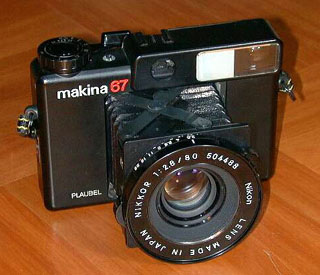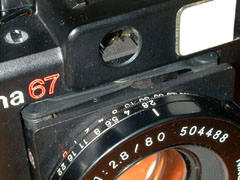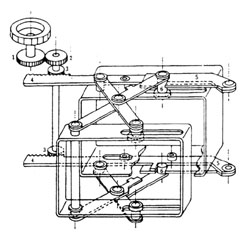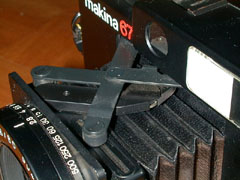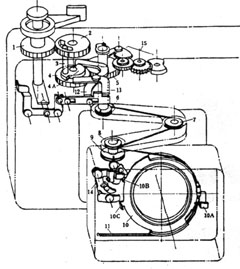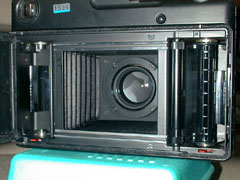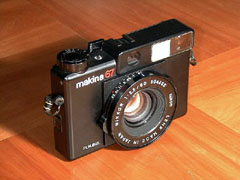
folded position
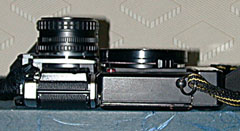
tickness comparison
left:Nikon FG + Series-E 35mm F2.5
|
The original makina, which is made by Plaubel at frankfurt Germany while 1920-1960, is folding, coupled-rangefinder camera for mainly 6x9cm format. This camera is considered as an unique, high-quality press-type camera with leaf shutter, interchangeable lens and film back which is replaceable by ground glass.
After WW-II, plaubel mainly made monorail view camera, but the conductor who was a son of the Plaubel founder was aged and selled the company to Doi group, Japan in 1975. Doi group is the holder of famous franchise camera shop "Doi", and the president Kimio Doi was told as not only a good manager but also camera enthusiast and the famous camera collector.
After buying Plaubel, Mr. Kimio Doi started making his ideal camera. The first prototype which is named "Makinette 67" made by Plaubel, Germany, did not satisfy Mr. Doi. However, the prototype already equipped with Nikkor 80mm F2.8 as same as selled Makina67, because the adption of the Nikkor lens was the early decision of Mr. Doi. Then the body design was requested to Konishiroku (now, Konica) because the president of Konica and Mr.Doi was acquintance each other, but he never agreed to change the lens to Konica made. After that, the body was designed by Konica and lens by Nikon.
In 1978, Plaubel Makina 67 is announced at photokina and then sold in 1979. As described above, released Plaubel Makina 67 was almost Japanese camera from design to manufacturing, except its brand name. The camera was made by an affiliated company of Copal which is famous for "copal square" metal focal plane shutter and leaf shutter. In fact, Plaubel makina was ecquipped with Copal #0 leaf shutter within the Nikkor lens. Then, the manufacturer was changed to Mamiya in 1981, because the president of Mamiya was acquaintance with Mr. Doi and offered him to concentrate the manufacture of each medium format camera.
After the camera was got off the ground, Doi released wide-version Makina W67 camera with 55mm F4.5 Wide-Nikkor and then revised Makina 670 (capable type 220 film. lens is same as Makina 67). They also made very-wide angle camera, Plaubel 69W proshift with Schneider Supuer-Angulon 47mm lens. But unfortunatelly, Mamiya suddenly went bust in March 1984 and production of Makina was stopped in 1986. That event also meaned that the last Nikkor lens for medium format had been gone.
|
